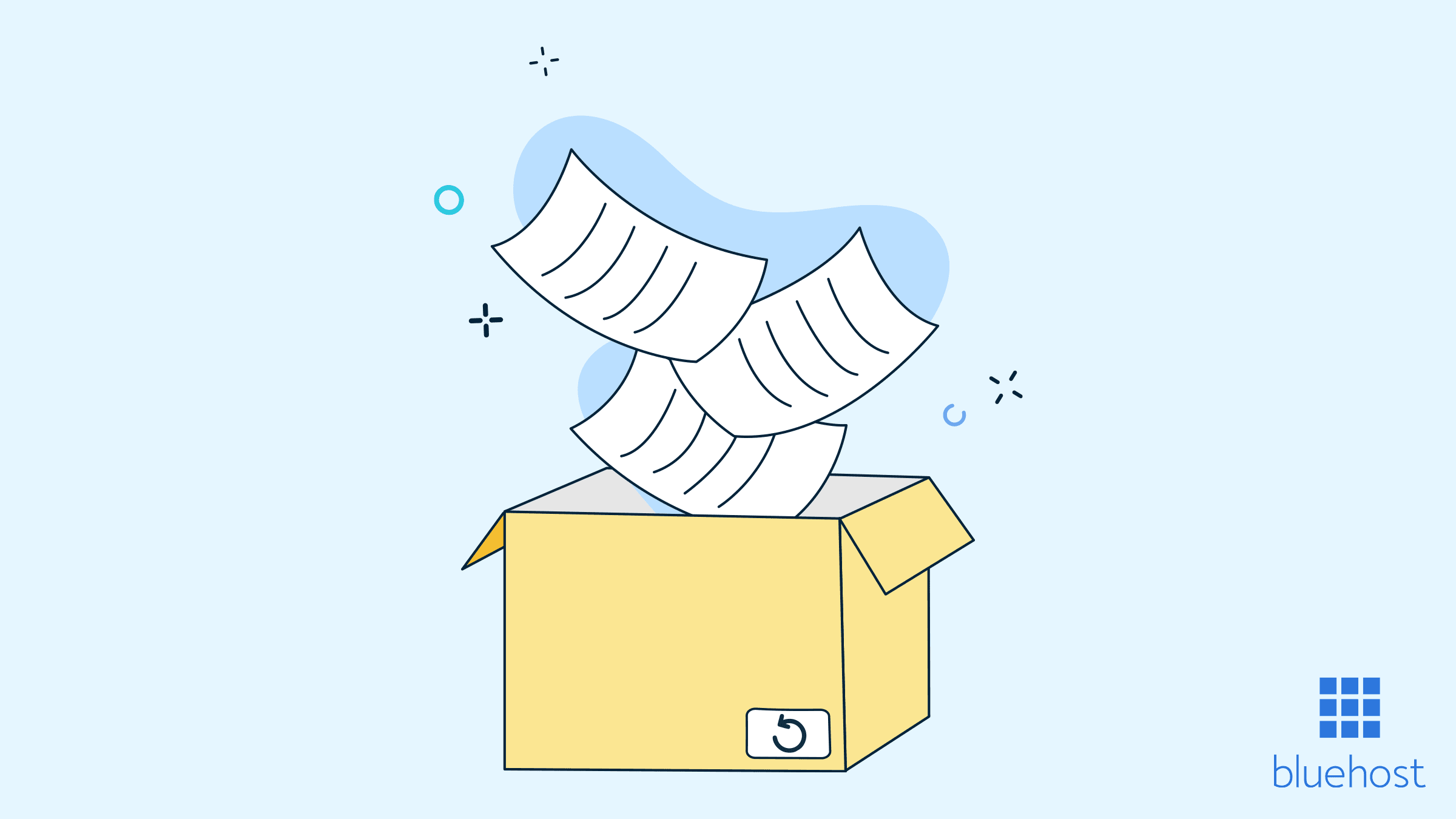Every WordPress site stores its core data, including posts, pages, user credentials and configuration settings, in a MySQL database. Locating this WordPress database location is essential for troubleshooting errors, managing database tables and connecting through tools like phpMyAdmin.
This article explains how to access the WordPress database, confirm the correct document root, access the wp-config.php file and identify your site’s database for better management of your WordPress installation.
Step 1: Identify the Document Root
The document root is the main folder where the WordPress installation is created. Confirming the correct root ensures you view the right php file containing database information.
Using Account Manager
- Log in to your Bluehost Account Manager.
- From the navigation menu, select “Website” and click “Manage.”

- From top, navigate to “Files & Access.”
- The Document Root column shows where WordPress stores its data.

Using cPanel
- Log in to cPanel.
- Navigate to the Domains section.
- Locate the required domain.
- The Document Root column lists the folder where WordPress files are stored.

Step 2: Open File Manager
Once you know the correct document root:
- Log in to the Account Manager.
- Select Hosting and choose File Manager.

- File Manager opens, showing your website files and folders. Navigate to the confirmed document root to access your WordPress dashboard files, including the wp admin directory, plugins and configuration files like .htaccess.
Step 3: Locate and Edit the wp-config.php File
The wp-config.php file contains the database information used by your WordPress site. This file links your hosting setup to the correct database host.
- In File Manager, locate the wp-config.php file inside the document root.

- Select the file and click “Edit.”

- In the editor, search for the following lines of code:
define(‘DB_NAME’, ‘example_database’);
define(‘DB_USER’, ‘example_user’);
define(‘DB_PASSWORD’, ‘example_password’);
define(‘DB_HOST’, ‘localhost’);
- DB_NAME: The name of your WordPress database.
- DB_USER: The MySQL user with access.
- DB_PASSWORD: The login password for the database.
- DB_HOST: The server hosting the database.
This confirms which database directly powers your WordPress development site and how data is stored.
Step 4: Access phpMyAdmin (Optional)
After identifying the correct database, you can manage it using the phpMyAdmin tool in cPanel.
- In the Website section, select Manage for your website.
- Under overview section, navigate to phpMyAdmin under horizontal buttons below.
- You can now view, edit, export or back up your database tables.
Know more: File Manager – How to Create, Remove and Edit Files
Important: Always save a backup before modifying tables. Deleting or editing rows incorrectly can affect your WordPress dashboard, login URL or even break your site’s admin area.
Summary
To find your WordPress database:
- Confirm the correct document root in Account Manager or cPanel.
- Open the wp-config.php file to identify the database name, user and host.
- Use phpMyAdmin to manage tables, posts or additional functionality directly.
Understanding the WordPress database location helps site owners troubleshoot login issues, manage stored data and maintain a secure web host setup. This knowledge ensures your WordPress site runs smoothly while keeping all the information safe and accessible for WordPress experts and beginners alike.



Write A Comment